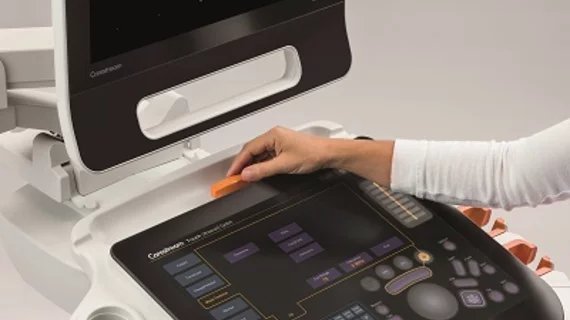CT more sensitive than ultrasound when diagnosing acute cholecystitis
CT is more sensitive when diagnosing acute cholecystitis (AC) than ultrasound, but radiologists at the University of Mexico in Albuquerque suggest clinicians continue to rely on ultrasound as the first step of diagnosis.
Patients presenting with AC, alongside those with acute appendicitis, small-bowel obstruction, urinary colic, perforated peptic ulcer, acute pancreatitis and acute diverticular disease, make up more than 90 percent of patients at any given time in surgery wards, author William M. Thompson, MD, and colleagues wrote in the American Journal of Roentgenology. Of those conditions, AC is the most common cause of upper-quadrant abdominal pain, though one-third of patients with suspected AC will receive an alternative diagnosis.
“Imaging is often useful because it aids in making the correct diagnosis of AC, decreases time to diagnosis and reveals complications such as gangrenous cholecystitis and perforation, which can be life-threatening,” Thompson et al. wrote. “Ultrasound is considered the first-line imaging modality.”
Reported sensitivity and specificity of ultrasound in these cases ranges from 50 percent to 100 percent and 33 percent to 100 percent, respectively. But few studies have compared the actual efficacy of ultrasound next to CT, the authors said.
For their study, Thompson and his team evaluated patients at their New Mexico practice who had been diagnosed with AC—56 of those patients underwent ultrasound, 48 opted for a CT and 42 underwent both procedures. Thompson and colleagues also assessed a control group of 120 patients without AC, half of whom underwent ultrasound and the other half of whom underwent CT.
It was clear that CT was a more sensitive medium than ultrasound for detecting illness in these patients, the authors wrote. CT overshadowed ultrasound’s 68 percent sensitivity with 85 percent, though Thompson et al. said neither of those numbers were as high as prior data have suggested.
Negative predictive values for CT and ultrasound, however, were similar, with CT’s 90 percent stacking up against ultrasound’s 77 percent. There were no false positives in the study, the authors reported, so specificity and positive predictive values for both modalities were 100 percent.
“CT at our institution was statistically significantly better for the diagnosis of AC than US, most likely because of an unclear clinical picture, the patient population and a high proportion of poor-quality ultrasound examinations,” Thompson and co-authors wrote. “However, ultrasound is still our first test of choice if AC is suspected clinically.”
When the clinical picture is unclear, the authors said, technologists could move on to a CT approach, and in the case that both imaging methods fail, the researchers suggested hepatoiminodiacetic acid scanning.
“CT and ultrasound are complementary,” the team wrote. “The other modality should be considered if there is high clinical suspicion for AC and the results of the first examination are negative.”

